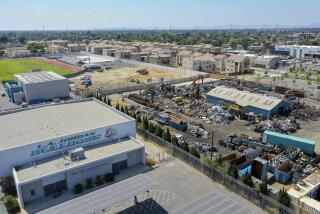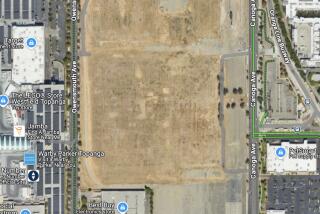Witness Bolsters Defense in Blast
- Share via
The testimony of a key prosecution witness Tuesday supported a defense claim that valuable chemicals, not hazardous waste, were stored at Rocketdyne’s Santa Susana Field Laboratory, where a 1994 explosion killed two scientists.
John Gray, 69, a retired Rocketdyne manager, testified in federal court in Riverside that none of the materials stored in giant lockers around the Ventura County facility was waste. He said some of the materials could have been used by customers.
Gray’s testimony could help defense lawyers, who are trying to show that the deadly explosion occurred while five employees were conducting legitimate scientific tests.
Prosecutors allege that the workers were illegally burning hazardous waste for disposal.
They have charged Joseph E. Flanagan, 61, of Stanwood, Wash., and Edgar R. Wilson, 65, of Chatsworth, with two counts each of illegal treatment of hazardous materials. Flanagan also is charged with one count of unlawfully storing the waste. If convicted, they face five years in prison on each count.
During his fifth day of testimony, Gray, who was in charge of creating an inventory of chemicals at the facility, denied that any of the materials in the storage containers he surveyed were waste.
Gray said the materials might be considered excess if Rocketdyne were to limit its work with solid rocket propellants. But he said the materials could be shipped elsewhere for legal disposal.
Earlier in the day, Gray told Assistant U.S. Atty. William Carter he had never heard of any test in which scientists layered chemicals on top of sawdust and ignited them, as prosecutors say was done before the July 26, 1994, explosion that killed Otto K. Heiney, 53, of Canoga Park, and Larry A. Pugh, 51, of Thousand Oaks.
Defense lawyers said they believe the men were studying the overpressure created by burning propellants. But Carter said they did not use proper procedures, including documenting the kinds of materials burned and the results.
Gray said he had conducted another kind of overpressure experiment with Heiney, but they burned 20 grams of propellant, compared with the 20 pounds Carter said was being burned when the explosion occurred.
Gray also testified that he and employees in the environmental and transportation divisions had found a company to legally take much of the excess propellants being stored at the field lab.
More to Read
Sign up for Essential California
The most important California stories and recommendations in your inbox every morning.
You may occasionally receive promotional content from the Los Angeles Times.









